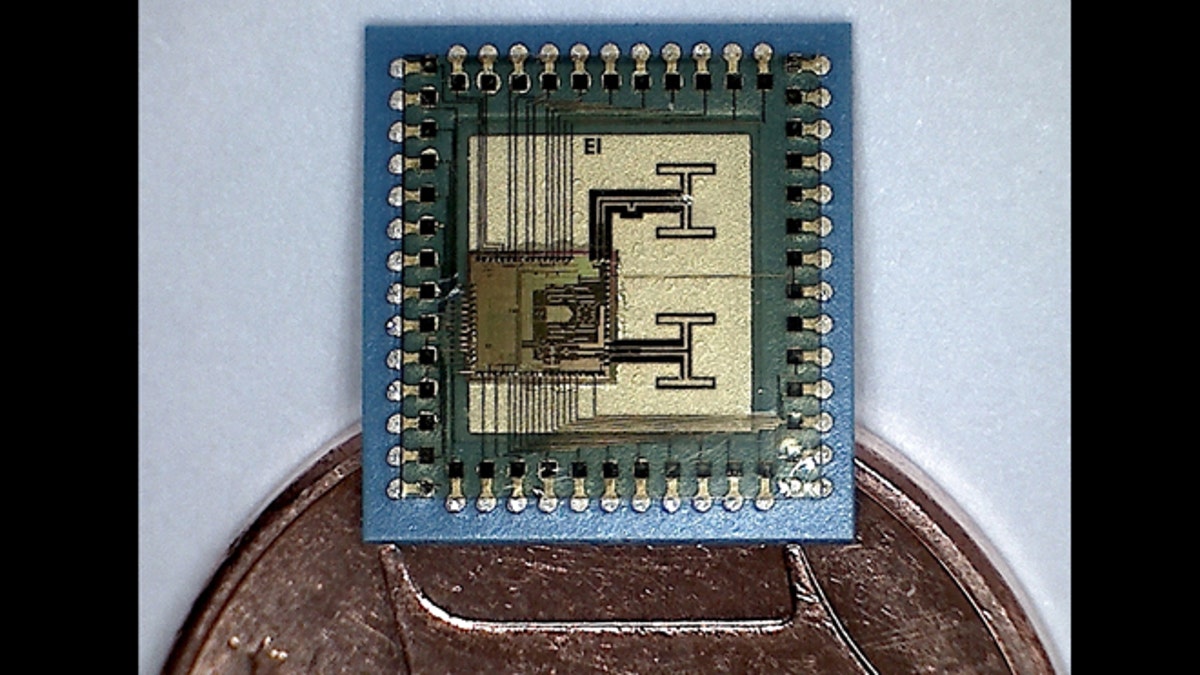
A tiny, 122-MHz radar system recently squeezed onto a microchip by a European consortium. (SUCCESS Project)
The smallest complete radar system in the world -- measuring less than half an inch on each side -- was squeezed into a low-cost computer chip recently, a European Union team of scientists said.
The Success project, nine academic and industrial partners across Europe, spent three years working on the chip package, with $3.9 million in funding from the European Commission.
And in this case, smaller is better.
'In this area, size matters a lot.'
"In this area, size matters a lot," said Christoph Scheytt from IHP Microelectronics, one of several companies collaborating on the shrinkage. They achieved the feat by tuning the radar to operate at frequencies beyond 100 GHz.
"The main motivation for using high frequencies rather than lower ones is that the antennas can be smaller."
Operating at 120 GHz, a wavelength of about 2.5 mm, the chip can accurately calculate the distance to an object. By using the Doppler effect, it can also detect moving objects and calculate velocity.
At about €1 for each mini radar, or about $1.30, the technology is also very cheap. But miniaturizing a radar dish wasn’t easy.
An FM radio has an antenna that's about three feet long; a Wi-Fi router's antennas are about 4 inches, the Success project system’s antennas are a fraction of that size.
The chip itself was developed by IHP, while Germany’s Karlsruhe Institute Of Technology handled the antennae design and integration.
Success claims a wide range of uses for a tiny radar, from ultrasonic sensors in cars that detect objects and pedestrians to automatic door controls, even automobile industry and cell phones applications.
In terms of military and security applications, the potential for robotics as well as distance and motion sensing applications is broad.
To maneuver in foreign environments, robots need exact control -- relying on precise all-around radar distance measurement -- making a tiny lightweight radar solution very handy.
The different partners in the Success consortium are now looking to use the technology commercially. Bosch has been investigating opportunities for deployment while German Silicon Radar, Finnish Selmic and Swiss Hightec expect to incorporate the technology in their industrial processes.




















